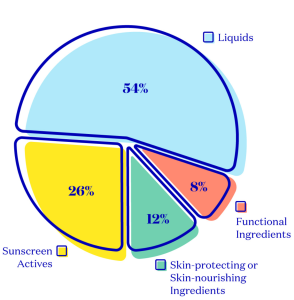There is an old saying that here in Minnesota, we have 11 seasons rather than the typical four. Those are:
- Winter
- Fool’s Spring
- Second Winter
- Spring of Deception
- Third Winter
- Mud Season
- Actual Spring
- Summer
- False Fall
- Second Summer
- Actual Fall
If you asked me, I’d say that right now, Minnesota has emerged from the Third Winter as well as Mud Season, is currently in Actual Spring, and getting closer to Summer with every day. With summer comes outdoor activities, mosquitos and sunshine so store shelves are full of bug spray and sunscreen which is how we got to wondering how sunscreen is made? We’ve got the answer for this month’s How It’s Made article!
How Is Sunscreen Made?
First and foremost, let’s outline just what sunscreen does. The sun emits three types of light: infrared, visible, and ultraviolet. Of the three, ultraviolet is the worst for humans. There are two types of ultraviolet rays (UVA and UVB). Depending upon which one, they will either penetrate the skin to cause damage to our cells and immune system, damage our eyes’ corneas and lenses, and/or cause skin cancer. Therefore, sunscreen does two things. It will either block these ultraviolet rays or absorb the rays before they can penetrate our skin. To do this, sunscreen contains one or more of the following ingredients:
- Titanium Dioxide
- Avobenzone
- Zinc Oxide
- Octisalate
- Oxybenzone
- Homosalate
These ingredients are considered sunscreen actives which are combined with many other ingredients including liquids (purified water), functional ingredients (synthetics, emulsifiers, and preservatives), and skin-nourishing ingredients (Vitamin E). You can see the general percentages of each in this graph!

So, what happens next? What do we do with all these ingredients? Read on below to find out!
Four Steps to Making Sunscreen
Step 1: Water is purified through the use of reverse osmosis.
Step 2: Mix Purified water with all other ingredients.
- The other ingredients will come in solid, powder, or flake form.
- Ingredients are mixed in large vats or kettles. Mixing follows a recipe which outlines the exact measurements of each ingredient as well as the time, speed, and temperatures needed for mixing operations.
- If you’re curious about this process or equipment, check out our How It’s Made – Vaccines article or How It’s Made – Candy article! There are many similarities!
Step 3: Mixed ingredients are moved through stainless steel piping to stainless steel tanks and into a sterile room.
- These tanks can have capacities of as much as 1,000 gallons.
Step 4: From these stainless steel tanks, the product then moves through more stainless steel piping to pressurized filling machines.
- A conveyor brings the mottles into a sterile room and also to these machines.
- The amount dispensed depends upon the bottle size and is controlled by machine programs.
- Nozzles on the machinery extend and retract over and over into the bottles for filling operations.
- Filled bottles are capped and packaged automatically by the equipment.
- Once boxed, then palletized, and wrapped, it’s ready to ship!
Now, this summary of sunscreen manufacturing is simplified. However, buying sunscreen can be anything but simple. If you’re like me, and many others standing in sunscreen aisles, you don’t know what to buy! Check out this helpful article from the American Academy of Dermatology outlining answers for all the common Sunscreen FAQs including which sunscreens to use and when to use them. Additionally, here’s a great article explaining SPF -Sun Protection Factor!
And remember, regardless of how many real “seasons” your state may have, it’s important to wear sunscreen year-round!
Happy (and SAFE) Sunning!
Kim Mooney – Technical Manager & Coach








